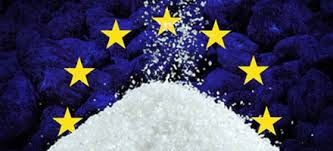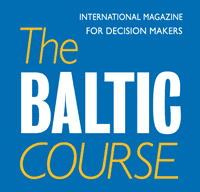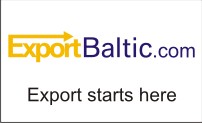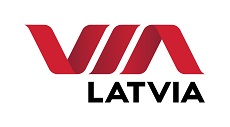Analytics, EU – Baltic States, Good for Business, Legislation, Markets and Companies, Modern EU
International Internet Magazine. Baltic States news & analytics
Wednesday, 07.05.2025, 06:19
The end of sugar quotas in the EU: expected benefits for industry
 Print version
Print version |
|---|
The
sugar quota system was introduced in the EU’s first CAP rules on sugar in 1968,
along with a support price for producers set at a level significantly above the
world market price. Although the principal decision to end the quota system for
sugar was taken by the EU states already in 2006 (the end of the quota system
followed reform of the sector during 2006-10), final decision was agreed
between the European Parliament and the member states in the 2013 after a major
reform and restructuring process initiated in 2006.
Due to some technical reasons quotas were abolished only in
September 2017: the average EU sugar price has recovered since the end of 2016
to around €500/t and has been stable in 2017. The EU is the world’s leading
producer of beet sugar (roughly 50% of the total); however, beet sugar
represents only 20% of the world’s sugar production: the other 80% is produced
from sugar cane. Most of the EU’s sugar beet is grown in the northern half of Europe,
where the climate is more suited to growing beet. The EU also has an important
refining industry that processes imported raw cane sugar.
EU’s financial support for sugar
Sugar
has been the last agricultural sector in the EU where production has been subject
to a quota system (milk quotas were abandoned two years before). Quotas were introduced
in 1968, with the first rules on the sugar common market organisation (CMO)
along with a support price for producers at a level significantly above the
world market price. At the time, the Common Agricultural Policy (CAP) had as
one of its main objective the European self-sufficiency in food production by
encouraging agricultural producers with remunerative and stable prices for
farmers. Quotas, together with a support price, gave a welcome incentive in the
member states to achieve these goals in the sugar sector during last decades.
Between 2006 and 2010, the sugar sector had been thoroughly
restructured with the Union’s support of €5.4 billion. As a result, the sector
has been able to carefully prepare for the changes and productivity has
improved substantially over the years. The end of the quota system gives
producers the possibility to adjust their production to real commercial
opportunities, notably in exploring new export markets. It also significantly
simplifies the current policy management and administrative burden for
operators, growers and traders.
Commissioner for Agriculture and Rural Development, Phil Hogan underlined on the occasion of abandoned quotas,
that the end of
the system represented an important turning point for European sugar sector and
signified an important step in the CAP’s market orientation. Hence, producers could
expand their trade in the world; besides, with the right policy supports from
the Commission, they will get timely and relevant market information for
further successful production and management. Thus, the end of sugar quotas
will provide industry with additional benefits from newly opened opportunities.
EU's continuing support for the sugar industry
Various measures from the Union’s CAP can be used to
continue supporting European sugar sector in unexpected disturbances on the
market. This includes a substantial EU import tariff (outside preferential
trade agreements) and the possibility to give support for private storage and
crisis measures that would allow the Commission to take action in case of
severe market crisis involving sharp increase and/or decrease of market prices.
Income support for farmers through direct payments is also available, including
the possibility for EU states to provide so-called voluntary coupled support
for sectors in difficulty, including sugar beet production.
The possibility to collectively negotiate value sharing
terms in the contracts between EU’s beet producers and sugar processors is
maintained after the end of the quotas.
The European Commission has also improved transparency on
the sugar market in anticipation of the end of the quota system. A new Sugar Market Observatory provides
short-term analysis and statistics about the sugar market, as well as recommendations
to help farmers and producers to manage their businesses more effectively.
More information in: = Sugar Factsheet
and
Commission’s comment on termination of sugar quotas in the EU
Historically
seen, CAP is a dynamic European sectoral policy which has constantly adapted to
fit with the evolving challenges and realities of food production, farmers’ needs,
environmental concerns and market demands. Following the shift from product
support (through prices) to producer support (through income
support via direct payments), initiated in 1992, an additional reform in 2003
consolidated this transition by decoupling the direct payments from the
production of any particular product.
The
transition in “sugar case” was envisaged in 2006 reforms, which included the
progressive reduction of support prices for beet and sugar, the phasing out of
public intervention until 2008/2009, ceasing paying export refunds from 2008
and including a mechanism to support the restructuring of the whole industry during
2006-10.
The
member states agreed in principle to end quotas in 2015: a system of voluntary
compensation (worth €5.4 billion) for ceasing the activity resulted in the
reduction of the quota production by roughly 6 million tones and led to the
creation of a more competitive EU sugar sector ready to compete on a
deregulated EU market closer to international prices, and to benefit from
market opportunities, both in the domestic and the world markets.
Following
this important transition, a decision was taken to postpone this landmark by
two years until the end of the 2016/17 sugar marketing year, i.e. from 30
September 2017.
Thus,
consensus among the European Parliament, the EU states and agricultural community
has led to simplified CAP with price and
quota management followed by monitoring administrative resources for national authorities.
Quota system in the EU
The total EU
production quota of 13.5 million tons of sugar has been divided among 20 member
states; strict rules governed production in excess of the quota (known as “out-of-quota”
sugar). It can be exported according the EU’s annual World Trade Organisation
(WTO) limit of 1.374 million tons, sold for biofuel or other industrial
non-food uses, or be stored and counted against the following year’s sugar
quota. There has been also a small quota of 0.72 million tons for an
alternative sweetener called isoglucose (also known as Glucose Fructose Syrup);
surplus production of isoglucose is subject to similar restrictions.
If
there are signs of excess sugar production on the EU market in the following
marketing year (which runs from 1 October to 30 September), a decision could be
taken to withdraw some quantities. If, on the other hand, there was the risk of
shortage, measures could be taken to increase supplies. Thus, the end of the
sugar quotas means that there are no further limits to production or to
exports, allowing production to better adjust to market demand, both within and
outside the EU.
Sugar sector: production, consumption, trade and employment
The
EU is the global leading producer of beet sugar (roughly 50% of the total).
However, beet sugar represents only 20% of the world’s sugar production; other
80% is produced from sugar cane. EU sugar production in the 2016/2017 marketing
year corresponds to 16.84 million tons (including 250 000 tons of sugar from
cane grown in the French Overseas Departments). As soon as there no quotas for
the upcoming harvest, it is expected an increase in production by roughly 20%
(20.1 million tons). This increase results from increase in area and higher
yields because of good climatic conditions.
In
terms of employment, there are roughly 145 000 sugar beet growers in the EU
in 20 states, plus 28 000 direct jobs in the sugar beet processing, and many more
upstream (farm machinery, agricultural inputs) and downstream (food processing,
wholesale, retail, transport, logistics). In addition to this, there are 8 000
sugar cane growers in the French Overseas Departments, and full time cane
refineries in 9 EU states.
In
terms of trade, the EU is one of the largest importers of cane sugar, in particular
as a result of the EU’s economic partnership agreements with the African,
Caribbean and Pacific countries, which grant many developing countries
duty-free access to the EU market. But the EU is also a sugar exporter. Under
the current quota system, WTO rules restrict EU’s “out of quota” exports to
1.374 million tons a year. But EU exports almost only out-of-quota sugar and
mainly to neighbouring countries in North Africa and Middle East.
The
bulk of sugar produced under quota and the sugar imported from third countries are
used by the EU food and drink industry for both the domestic market and the
export of processed products; only a minor part of the sugar production is
marketed and directly consumed. Out-of-quota sugar production is used for exports
(until the limit of 1.35 million tons), a variable volume goes for bio-ethanol
production (1.35 million tons in 2016-17) and to specified chemical uses
(800 000 tons for 2016-17). The remaining volume of out-of-quota sugar
(749 000 tons in 2016-17) will be carried forward to the next marketing year
and then released on the market as quota sugar.
CAP’ perspectives for the EU sugar sector after quotas
The
EU states have the option of providing voluntary coupled support linked
to production to address sectors in difficulties, including sugar beet
production. This option is taken up by 11EU states: Croatia, Czech Republic,
Finland, Greece, Hungary, Italy, Lithuania,
Poland, Romania, Slovakia and Spain)
with overall coupled support for sugar beet amounting to about €179 million in 2017. The Commission re-introduced a far-reaching system of collective
bargaining in the legal provisions applicable post quota that helps
the position of beet growers when negotiating with the other elements of the
food chain. This system improves the negotiating powers of beet growers towards
their sugar producers when concluding agreements regarding the delivery of
beet.
Collective
negotiations or written agreements within the food chain are compulsory and
provide predictable terms for delivering and buying beet. The sugar sector is
the only area where such far reaching agreements without competition scrutiny
exist. However these agreements cannot involve the collective negotiation of
the selling price as was the case under the quota regime. This scheme is
applicable after the quota end includes the possibility of voluntary value
sharing arrangements.
The
Commission is constantly providing market information and transparency to
enable the sector to respond to market developments. A new EU’s Sugar Market Observatory is aimed at providing the sugar sector
with more transparency by means of disseminating market data and short-term
analysis in a timely manner.
Private storage aid can also be granted if necessary taking into account market
prices, reference thresholds, costs and margins. Like other agricultural
sectors, the sugar sector is covered by several disturbance clauses available
in the CMO Regulation that would allow the Commission to take action in case of
severe market crisis involving a sharp increase or decrease of market prices.
Effect on the EU trade with developing countries
The
EU will export around 8% of the total production in 2016-17. With the end of
the quota system, these exports will no longer be limited by WTO rules, allowing
producers to fully explore new markets and possibilities.
As
for imports, the EU will continue to offer trade preferences and remain the
world's foremost provider of assistance to developing countries. However, sugar
can be and will continue to be imported into the EU duty-free and quota-free
under the Everything-But-Arms
agreement for the least-developed countries and from
countries that have concluded or implemented Economic Partnership Agreements
with the EU. Most of that sugar will need to be refined in the EU. These
preferential imports have declined in the recent years because of lower EU
prices and other markets having become more attractive during the last two
years. These imports will most likely further decline after the end of quotas
as domestic prices will closer align to world prices.
In
agreements with a range of Latin American countries, South Africa, Balkans
countries and Moldova the EU has also granted sugar concessions in the form of
tariff import quotas with reduced duties. Some additional import tariff quotas
in the sugar sector are part of the WTO agreement. In addition to these import
agreements, the EU has been extremely attentive to the situation of cane
farmers in developing countries, allocating over €1.2 billion for restructuring
or diversification in the 18 countries that traditionally supplied raw sugar to
the EU. These funds allowed countries to invest and move up the value chain (e.g.
for Mauritius) or to diversify away from sugar (e.g. for Trinidad and Tobago).
New opportunities for the sector and expected post-2017 market
situation
Without
regulatory limits on sugar production, sugar producers will optimise the use of
their production capacity and reduce the unit costs of producing sugar. This
will allow competitive suppliers to sell sugar on the world market which will
not be limited anymore when the quotas expire.
Certain
starch-based sweeteners, notably isoglucose, were limited until now to 0.7
million tons. This sector will be able to expand and generate new employment,
notably in rural areas as isoglucose is typically used for the production of
soft drinks.
EU
sugar consumption is expected to remain stable or slightly decline; however, as
much of the increase in output will either compensate for decreasing imports or
help to boost export sales.
The post-2017 situation is analysed in the Commission’s medium term
outlook report: it estimates that between 2016 and 2026
sugar production will increase by 6%. Isoglucose production could triple from
700 000 tons to 2.3 million tons. Imports will continue to drop from 3.0-3.5
million to 1.8 million tons and exports are expected to increase from 1.3
million tons to 2.5 million tons. For the upcoming harvest, no longer bound by
the limitations of the quota, an increase in production of roughly 20% (20.1
million tons) is expected. This increase results from both an increase in area
and higher yields because of good climatic conditions. This production,
however, follows two marketing years with relatively low production levels.
The
increase of production is likely to be compensated by a further decrease of
imports, an increase in exports which are expected to double to 2.8 million
tons and a possible rebuild of stocks which have been at the lowest level ever
in summer 2017.
Since
spring 2017, international prices have fallen as a result of an estimated sugar
surplus at world level after two consecutive years of deficit. In September
2017, world market prices were around €311 per ton. The EU domestic prices have
remained stable in previous months (€501 per ton in July 2017), however prices
will likely drop as from the beginning of the new marketing year and become
closer to world trends.
Whilst
it is most likely that EU sugar prices will provide a premium compared to world
market prices, they are expected to be closer to world market level in the
future.
In
spite of an increase of sugar production expected for the current harvest in
the EU, the market context as well as the economic structure and drivers of the
sugar sector allow for a fast and efficient reaction to market developments.
Production decisions in the sugar sector are taken by a limited number of sugar
producers; thus, contract beet hectares from farmers and production levels can
be adjusted annually.
The
EU sugar sector (supported by €5.4 billion) managed to get ready for the end of
the quota system; it is hoped to be prepared to properly react to market
signals. The increase of production in the first year post-quota is expected to
be absorbed by a higher level of exports (no more subject to WTO’s limit), a
likely reduction on imports and a recovery of sugar stocks (currently
particularly low). It is however unavoidable that the increase in supply will
bring the adjustment of EU prices to a level closer to the world market in
order to allow exports.
The
Commission hopes that, after one or two marketing years, beet and sugar
producers will have fully adjusted to the new market environment. It cannot be
excluded however, that production will further concentrate in the most productive
regions and, while some producers will successfully secure new market outlets
(inside and outside the EU), others will further reduce their production.
The
Commission will be ready to any possible market evolutions and will use safety
net measures to support producers.
Quotas’ effect on isoglucose and higher health risks
Sugar
consumption is expected to remain stable or slightly decline in Europe; there
is debate on how exactly the sugar and the isoglucose market will react to the
end of quotas and discussions on the health consequences of high intakes of
fructose in diet.
Other
names are used for isoglucose such as glucose-fructose syrup, fructose-glucose
syrup and high fructose corn syrup. As ingredients, isoglucose may be used to
replace, e.g. sucrose, this is the name for the simple table sugar coming
either from sugar beets or sugar cane. But whether free fructose and fructose
in sucrose have different metabolic effects is a matter of debate. The
Commission will continue efforts to promote healthy diets and physical activity
and promote product reformulation by industry on nutrition and physical activity
in the future.
According
to the European Food Safety Agency, there is some evidence that high intakes of
sugars in the form of sugars’ sweetened beverages might contribute to weight
gain and the relationship of patterns of consumption of sugars-containing foods
to dental caries, weight gain and micronutrient intake should be considered
when establishing nutrient goals for populations and recommendations for
individuals and when developing food-based dietary guidelines.
Too
many people in the EU, including children, do not comply with the World Health Organization’s
recommendation of reducing free sugars intake to less than 10% of total energy;
a number of EU states have established national recommendations for added
sugars at this level.
Promote healthy eating habits
The
Commission is supporting the EU states’ work on reformulating the food products’
recipe to lower their increase in certain nutrients. It is done by providing
real value to citizens and contributing to removing excess sugars, salt and fat
from products that are bought every day in European supermarkets. The
Commission intends to open tenders on nutritional quality of the food in EU
supermarkets and to support the monitoring national reformulation initiatives.
The
Commission takes a multifaceted approach to reducing sugar intake and healthy
diets in general. Since 2007, the Commission has a “Strategy on
Nutrition, Overweight, and Obesity-related Health Issues”, which
aims at contributing to reduce the risks associated with poor nutrition and
limited physical activity in the EU. The strategy encompasses a range of
initiatives covering many policy areas: e.g. the school fruit and
vegetables and milk scheme, which provides school children with
fruit and vegetables on a voluntary basis, encourages school children to
replace sugary snacks with healthier options.
In
2014, the High Level Group
on Nutrition and Physical Activity adopted an Action Plan on
Childhood Obesity that aims to halt the rise of childhood
obesity by 2020. Improving diet quality, including eating less sugar is a major
part of this plan, which includes promoting healthier diets in school and
pre-school, and making the healthy option the easy option, amongst its
objectives. In 2011, the High Level Group agreed on an EU Framework for
National Initiatives on Selected Nutrients (a framework had
been agreed to reduce salt in food by 16%). Work then started on reducing
saturated fat by 10% by 2020. In 2015, work started on Added Sugars Annex,
promoting a voluntary reduction of 10% in added sugars in processed food by
2020.








 «The Baltic Course» Is Sold and Stays in Business!
«The Baltic Course» Is Sold and Stays in Business!

